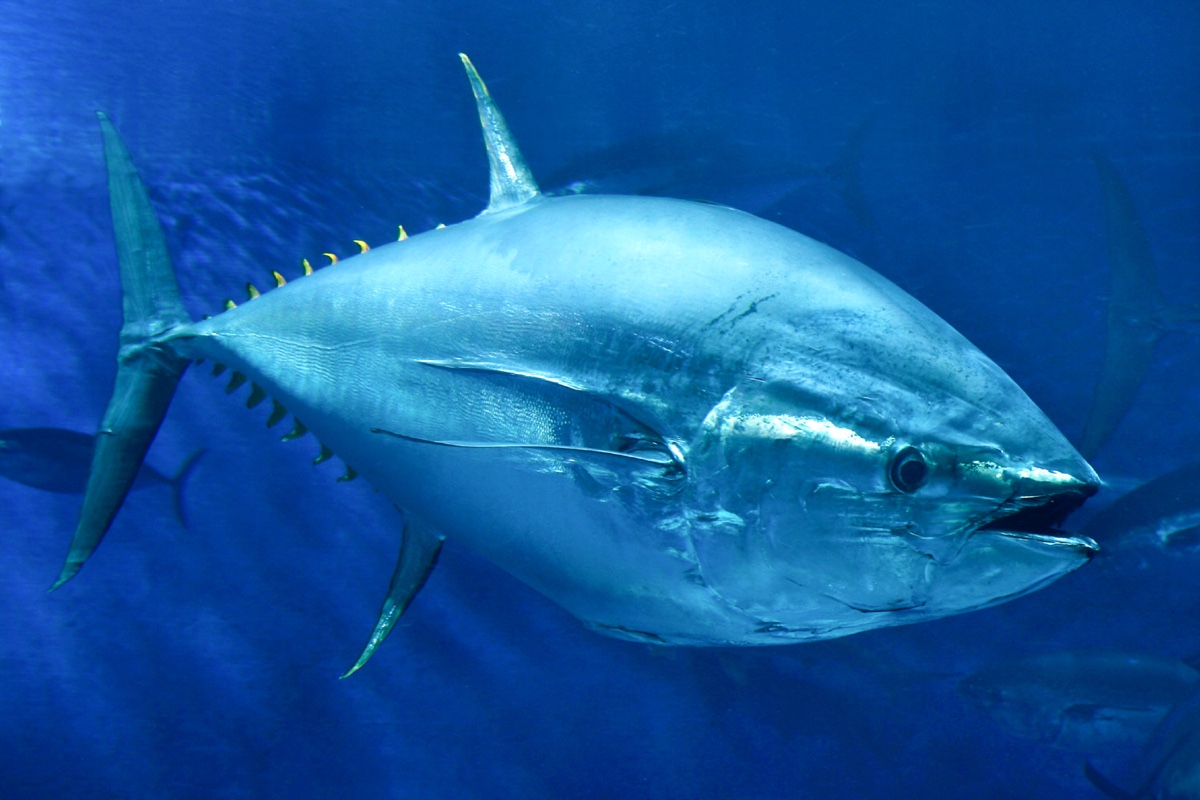Tuna Fins Are Weirder Than You Think
Fins are not really the most noticeable thing about the tuna. Watch these marine wonders at an aquarium, and you're more likely to notice their large, gaping mouths or their silver, streamlined bodies.
But fins, it turns out, are one of the weirdest things about these fast-swimming fish. In a trick never seen before in any animal with a backbone, tuna use their lymphatic system to control their dorsal and anal fins.
Yes — the lymphatic system. This network of fluid-filled vessels and nodes, best known for producing those swollen bumps you get on your neck when you have a fever, acts like a hydraulic system to stiffen the fins and increase the tuna's mobility when they're chasing prey, said Barbara Block, a biologist at Stanford University's Hopkins Marine Station. The discovery, Block said, was completely unexpected.
"It's the first example of lymphatic fluids or the lymphatic system taking part in motion control in vertebrates," Block told Live Science.
Speed and control
Tuna are adapted for two things: speed and long, ocean journeys. Yellowfin tuna, for example, have been clocked cruising at 47 mph (75 km/h), and tuna species regularly migrate huge distances across the Pacific Ocean. [Gallery: See Photos of the Freakiest-Looking Fish]

Tuna have sleek, teardrop-shaped bodies and small fins to help them cut through the water. These fins move only subtly, Block said. In fact, she and her colleagues never would have noticed the tiny adjustments the fish make with their fins if they hadn't been able to watch them in the Monterey Bay Aquarium's massive Open Sea tank. Such detailed observations never would have been possible in the wild, Block said.
"People like me just spent hours watching these tunas," she said.
Sign up for the Live Science daily newsletter now
Get the world’s most fascinating discoveries delivered straight to your inbox.
The plot deepened when Vadim Pavlov, a postdoctoral researcher in biomechanics at Stanford, dissected some bluefin fins for a separate study and discovered a strange fluid-filled cavity under the second dorsal and anal fins (the vertical fins on the tuna's back and belly). The researchers called in Benyamin Rosental, a postdoctoral researcher in regenerative medicine at the Hopkins Marine Station, who helped analyze the cells within the fluid and the tissue that made up the cavity and its attached vessels. The fluid, he found, was lymphatic fluid. The lymphatic system plays a role in draining the body of excess fluid and is a main highway for the transport of immune cells; no one had ever seen it integrated into a fin structure like this.
Repurposed system
At first the team thought perhaps the fish was using the chamber to regulate its temperature. The reality turned out to be much more surprising. The researchers found that small muscles at the base of the fins contract to push lymph fluid into that chamber under the fin, and, from there, into channels in the fin itself. The fluid then forces the fin into a more erect position. The stiffened fins form a pivot point for the speedy fish, giving them a way to make sharp, quick turns in the water: Imagine the difference between trying to turn a canoe with a pool noodle versus a sturdy wooden oar.
High-speed video taken at the Monterey Bay Aquarium and at Stanford's Tuna Research and Conservation Center shows tuna using this ability to snatch squid snacks from the water. The lymphatic hydraulic system is found in both Pacific bluefin tuna (Thunnus orientalis) and yellowfin tuna (Thunnus albacares), the researchers reported today (July 20) in the journal Science. Mackerel, the evolutionary lineage that gave rise to tuna, don't universally have this type of control, Block said, but the researchers did find a similar structure in Pacific bonito and the Spanish mackerel, both close cousins of tuna.
"It's clear that in the evolution of these cruise specialists, there are steps along the way and some of these fish have the hydraulic fin mechanism and some of them don't," Block said.
The researchers are now using sophisticated instruments to study tuna swimming abilities in more detail, measuring things like acceleration and kinematic movement in the water. Beyond just understanding the "amazing specializations" of tuna, Block said, the goal is to help inspire new innovations in robotics.
"There are really going to be some interesting opportunities in the world of autonomous vehicles to learn from what the tunas are doing," she said.
Original article on Live Science.

Stephanie Pappas is a contributing writer for Live Science, covering topics ranging from geoscience to archaeology to the human brain and behavior. She was previously a senior writer for Live Science but is now a freelancer based in Denver, Colorado, and regularly contributes to Scientific American and The Monitor, the monthly magazine of the American Psychological Association. Stephanie received a bachelor's degree in psychology from the University of South Carolina and a graduate certificate in science communication from the University of California, Santa Cruz.










